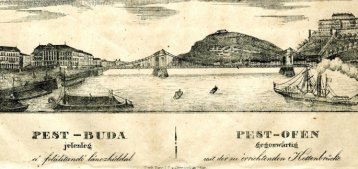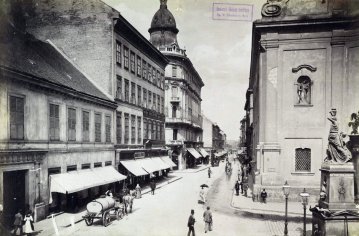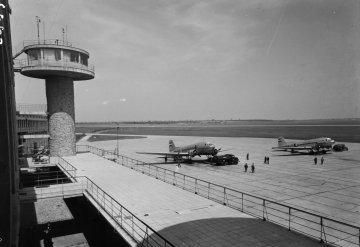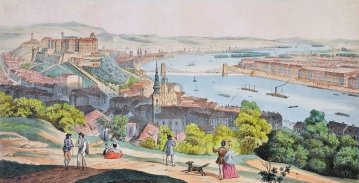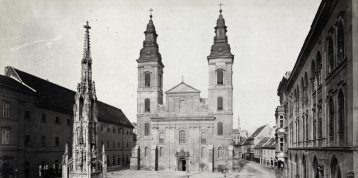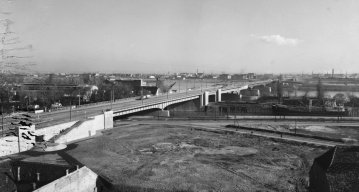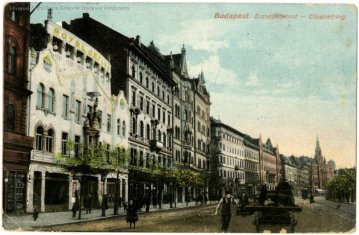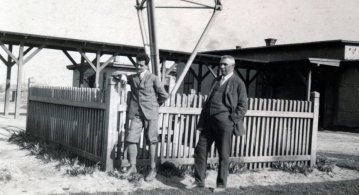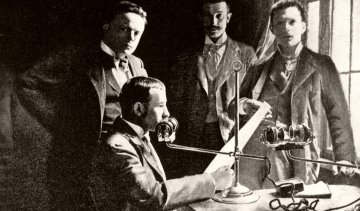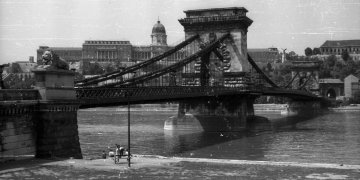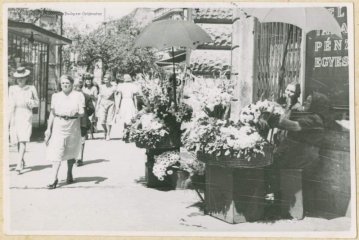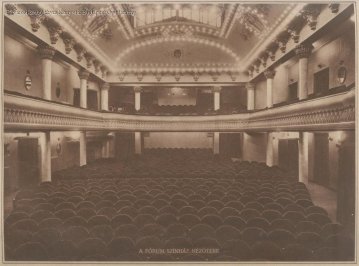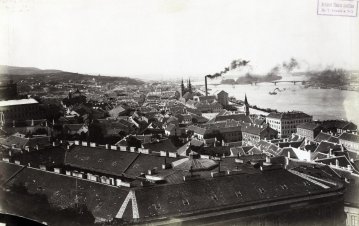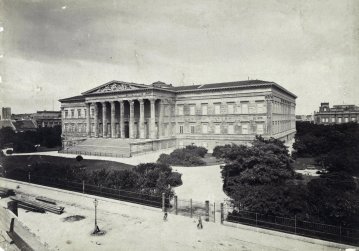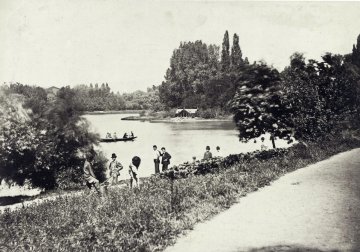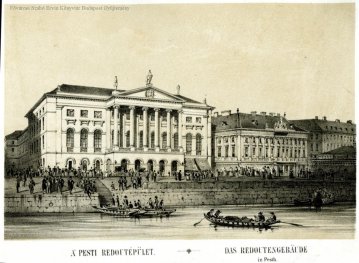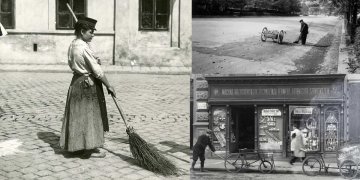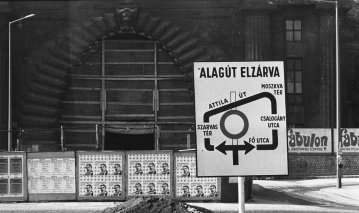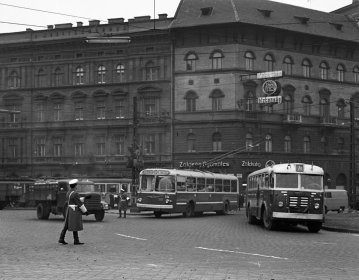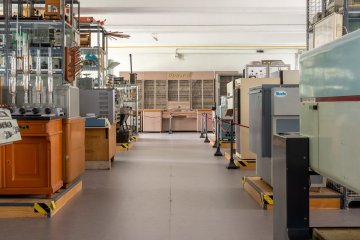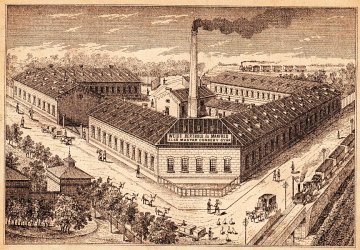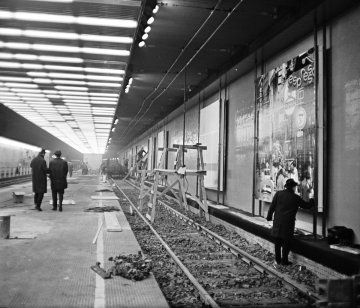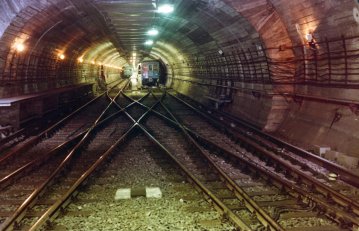Csaba Domonkos
Cikkek
The Bridge Report, which brought a turning point in the history of Budapest
March 31, 2023 at 3:00 PM
A travel report that changed the history of Pest and Buda, as well as Hungary. The little book contributed to the change of half a thousand years of legal customs and the implementation of an investment of unprecedented size and technical quality. This book was The Bridge Report [Hídjelentés in Hungarian].
If the efforts of 1848 had not failed, Szabadság Square would be somewhere else today
March 28, 2023 at 12:30 PM
Do you know where Diadal Street or Szabad Sajtó Street was in 1848? Not where many would think. During the revolution of 1848, the street names of Pest and Buda also changed.
Sightseeing flights over Budapest - This is how air travel was popularised 70 years ago
March 26, 2023 at 3:00 PM
Seventy years ago, the Hungarian airline of the time, MASZOVLET, wanted to bring aviation closer to the general public, so it invited interested parties to a quarter-hour sightseeing flight. Many were flying for the first time, the oldest passenger was over 80 years old.
The downfall of the first Hungarian railway
March 22, 2023 at 12:00 PM
Technical problems, and price competition caused by rivals caused the loss of the first Hungarian railway line. The company, which started with high hopes, suspended its activities 195 years ago. This was the Pest-Kőbánya suspension railway.
Parking garage in the historic inner city
March 21, 2023 at 1:00 PM
Cars everywhere - this characterised Budapest 50 years ago. Parking was thought to be part of the modern city. In Budapest, there were more and more cars, but the number of parking spaces did not increase fast enough, and a parking garage for 350 vehicles in the very centre of the inner city wanted to help with this.
Pest and Buda in 1848
March 16, 2023 at 11:00 AM
Perhaps the best-known Hungarian historical date is 15 March 1848. But what was the city of Pest and Buda like 175 years ago, where a few literary young men recited poems and printed a manifesto in a heightened mood, accompanied by a relatively large but peaceful crowd on that rainy March day, thus setting a new direction for the development of Hungary?
Tunnels instead of bridges? – An unrealised plan from the 19th century to connect Pest and Buda
March 11, 2023 at 2:30 PM
The plan to build road tunnels under the Danube instead of bridges was seriously considered in Budapest already 130 years ago. Proponents argued that tunnels were cheaper, more sustainable and less militarily vulnerable. This idea was on the agenda for years, but the tunnels were not built in the end.
The competition of the bridges was decided at a meeting
March 10, 2023 at 11:00 AM
Should the Árpád or the Petőfi Bridge be built first? This was the dilemma that preoccupied the rebuilders of the bridges in Budapest in 1948. The question was not new, the same decision had to be made once 20 years earlier. At that time, the bridge at Boráros Square "won", but after the destruction of World War II, the question was again whether to continue the work with the blown-up bridge at Boráros Square or the half-finished Árpád Bridge.
The last expropriations: Dilapidated houses stood on the route of Erzsébet Boulevard
March 4, 2023 at 2:00 PM
The Outer Ring Road in Budapest was built over a long period of time in several waves. One of the important turning points in the history of the construction of the road occurred in 1888 when the section from Margit Bridge to Üllői Road became completely open.
The radio is playing - Experimental broadcasting started 100 years ago
March 1, 2023 at 1:00 PM
Regular public radio broadcasts started in Hungary at the end of 1925, but it was possible to listen to the radio in Hungarian in the country more than two years before public broadcasts began because experimental broadcasts started in March 1923.
It preceded the radio: The telephone herald was a Hungarian invention that delivered the news to the public immediately
February 20, 2023 at 3:00 PM
When, thanks to Tivadar Puskás's invention, the Telephone Herald began operating in Budapest on 14 February 1893, radio broadcasting was still an unknown concept. The service, which delivered news read into a microphone via the telephone network, attracted the interest of the general public, which is not surprising. During these years, the Hungarian capital was under enormous development: palace-like public buildings and residential houses were completed one after the other, trams were already running on the roads, and the organisation of the millennium celebrations was in full swing, meaning that the new invention arrived in an optimistic era.
The Chain Bridge was closed 50 years ago as well
February 16, 2023 at 1:30 PM
The Chain Bridge was closed 50 years ago as well, as after its reconstruction in 1949, it needed to be renovated again. The works were timed for the 100th anniversary of the unification of Pest, Buda and Óbuda. The old painting had to be removed from a surface of 73,000 square metres, but at that time the 1949 coat of arms was also replaced with the version current in 1973.
The meeting of two brilliant Hungarians with the florist - Donát Bánki and János Csonka patented the carburettor 130 years ago
February 11, 2023 at 1:00 PM
For a long time, the carburettor was an essential part of car engines. Its creators, János Csonka and Donát Bánki applied for a patent for this device on 11 February 1893. According to legend, the two friends got the idea while watching a flower seller on the Inner Ring Road.
A miracle in Budapest - The first talking film was greeted with thunderous applause 95 years ago
February 9, 2023 at 10:00 AM
The former Fórum cinema in Budapest played a key role in the spread of the sound film, which on 9 February 1928 presented a work in which people could hear the aeroplane buzzing, the goose cackling and the cows mooing.
Who should pay for the bridge? - The Pest and Buda horse-drawn railway companies merged 145 years ago
February 4, 2023 at 2:00 PM
The desire to save money forced the merger of the Pest and Buda horse-drawn railway companies because horse-drawn railway traffic was only allowed on Margit Bridge if the companies paid the additional cost of the wider bridge. Since the two companies could not agree on the use of the bridge, 145 years ago the larger, richer company bought the smaller one instead. This made it possible for horse-drawn railway transport to start between Pest and Buda a year later, in 1879.
On the way to Greater Budapest
February 2, 2023 at 12:30 PM
The area of Budapest has changed several times in the last 150 years. The unification of 1950, the creation of today's Budapest, did not come out of nowhere, at that time there had already been talking about developing Budapest and its surroundings for decades, and harmonising the ideas.
It became the most important work of classicist architecture: the new National Museum opened its doors to the public 175 years ago
January 24, 2023 at 5:00 PM
When the country's most important classicist building, the National Museum designed by Mihály Pollack, was completed in 1847, it took time to properly house the artefacts and books collected over the decades and to create the exhibition spaces. The classicist palace opened to the public 175 years ago, on 24 January 1848, but at that time no one thought that in less than two months the building would become the scene of events that would make it a national symbol forever.
From swamp to public park: Donations were requested for tree planting in the City Park 205 years ago
January 19, 2023 at 11:00 AM
Two hundred and fifty years ago, on the site of today's City Park, on the outskirts of the city, there was a swamp and an ox pasture. Although there were attempts to afforest the area, it also happened that the planted saplings were simply nibbled by the oxen. The plans for the development of the Park were completed by 1817, but the money needed for its implementation was lacking. Therefore, 205 years ago, fundraising began for the creation of the public park.
In the wake of the disappeared Redoute - Pest's first place for merriment existed for only 16 years
January 17, 2023 at 11:00 AM
At the beginning of the 19th century, the dynamically developing city of Pest desperately needed an elegant ballroom in which high-quality dance parties could be held that met the needs of the high-class audience. The first site in the capital that was built for this purpose was the Redoute, the predecessor of today's Vigadó of Pest, but the classicist palace, handed over 190 years ago, on 13 January 1833, decorated the Danube bank of Pest for only 16 years.
These were the public cleanliness rules in Budapest 145 years ago
January 11, 2023 at 11:00 AM
Budapest adopted strict regulations 145 years ago to make the city cleaner. It was forbidden to throw garbage on the street, it became forbidden to shake the dust rag out of the street window, and it was forbidden to urinate on the street. The horse-drawn carriage stations serving transportation had to be disinfected daily, and horse manure could only be carried away in closed carts. Watering the sidewalks was abolished to protect women's clothes, and it was forbidden to throw melon rinds in the street, according to the capital's new public cleanliness regulations, which were adopted in January 1878.
The renovation of the Buda Castle Tunnel began 50 years ago on the occasion of the 100th anniversary of the city unification
January 8, 2023 at 2:00 PM
The Buda Castle Tunnel is an important traffic route in Budapest and also an interesting technical monument. When it was handed over in 1857, it was part of the route leading to the only bridge at the time, and it has not lost its traffic importance even into the 21st century. Although it was designed for horse-drawn carriages, today it is used by cars. The current appearance of the passage took shape 50 years ago, the Tunnel was closed on 8 January 1973 due to the works.
The Holy Crown has returned home – Hungarian relics were taken off the American plane to the sounds of the Rákóczi March
January 6, 2023 at 10:00 AM
On 5 and 6 January 1978, Budapest and Hungary became the centre of attention in the international press. The reason for this was that it was then that the United States of America returned the Holy Crown to the Hungarian nation. The Holy Crown was solemnly received in Budapest.
BKV was established 55 years ago - There was a ticket inspector on all vehicles and one could travel cheaply
January 4, 2023 at 11:00 AM
On 1 January 1968, Budapest Transport Company took over the capital's public transport from three other companies. Until then, Budapest's trams, buses, suburban railways and other means of transport were operated by three independent companies, the Metropolitan Electric Railway Municipal Company, the Metropolitan Bus Municipal Company, and the Metropolitan Suburban Railway Municipal Company. In addition, the new organisation absorbed the Municipal Shipping Company.
The Museum of Technology was founded three times - Unparalleled Hungarian memories are preserved in the collection created 50 years ago
January 2, 2023 at 5:00 PM
Fifty years ago, the Hungarian Museum of Technology was founded for the third time. According to the founding document dated 1 January 1973, its task is to collect and present Hungarian natural science and technical memorabilia. The museum preserves such special treasures as Ányos Jedlik's electric motor created in 1828 and his electric car made in 1855, the world's first carburettor engine, the first Hungarian computer and the very first Gömböc.
The last tram passed through Rákóczi Road and Erzsébet Bridge 50 years ago
December 30, 2022 at 6:00 PM
Tram traffic started on Rákóczi Road already 125 years ago, and there was a time when five different lines passed through here. But the means of transport, which is very popular with the travelling public, was gradually pushed out of the inner city districts. The last tram passed through Rákóczi Road and Erzsébet Bridge 50 years ago, on 31 December 1972, and its journey ended at Móricz Zsigmond Square. The demolition of the tracks soon began. In recent years, it has been brought up more and more often that the tram should be brought back to this route.
Beszkárt, the capital's public transport company, was founded 100 years ago
December 28, 2022 at 6:00 PM
Budapest's public transport was operated by several companies for a long time, for example, there was a period when the tram services only were operated by three different companies. But 100 years ago, the Budapest Székesfővárosi Közlekedesi Részvénytársaság [Budapest Capital Transport Company], or Beszkárt, was founded, which soon gained control over all the capital's means of public transport.
The death of Baron Manfréd Weiss of Csepel, a member of the House of Magnates
December 27, 2022 at 1:00 PM
Manfréd Weiss, a canner, became one of the richest Hungarian tycoons, the owner of Csepel Steel and Metal Works. When he died 100 years ago, they said goodbye to a wealthy industrialist who built a hospital, maternity home, sanatorium, nursery for his workers, and operated a soup kitchen for the poor. His huge empire, in which machine tools, sewing machines, stoves, bicycles, cars and aeroplanes were made, survived him by decades. The Csepel Steel and Metal Works Trust was dissolved in 1983, and independent companies were created from its units and tried to meet the increasingly difficult market challenges.
The Batthyány Square terminus of the suburban railway was handed over 50 years ago
December 23, 2022 at 12:30 PM
The Budapest terminus of the suburban railway [HÉV] from Szentendre has been moved several times, most recently just 50 years ago, when it moved to its current location, Batthyány Square. The timing and the location were no coincidence either, as the suburban railway was able to connect to the metro this way which was also handed over at the time. The current terminus was handed over 50 years ago, but it may also change in the future.
Metro 2 was completed 50 years ago - Construction was started with spades and shovels
December 21, 2022 at 11:00 AM
Despite the fact that the first underground railway on the European mainland started in Budapest in 1896, the next underground railway section was completed in its entire length only fifty years ago, in December 1972. The construction lasted for more than twenty years and did not lack difficulties.
The first section of Hegyalja Road was completed 90 years ago
December 15, 2022 at 11:00 AM
Nowadays, Hegyalja Road is one of the most important traffic routes in Buda, as it connects Budaörsi Road with Erzsébet Bridge. Its existence is natural to everyone now, many people get to Lake Balaton this way, but when the original Erzsébet Bridge was built, the road was not yet ready: its first section, which was built by public workers during the economic crisis, was handed over 90 years ago. The investment caused controversy, some feared for the silence of the Tabán.

